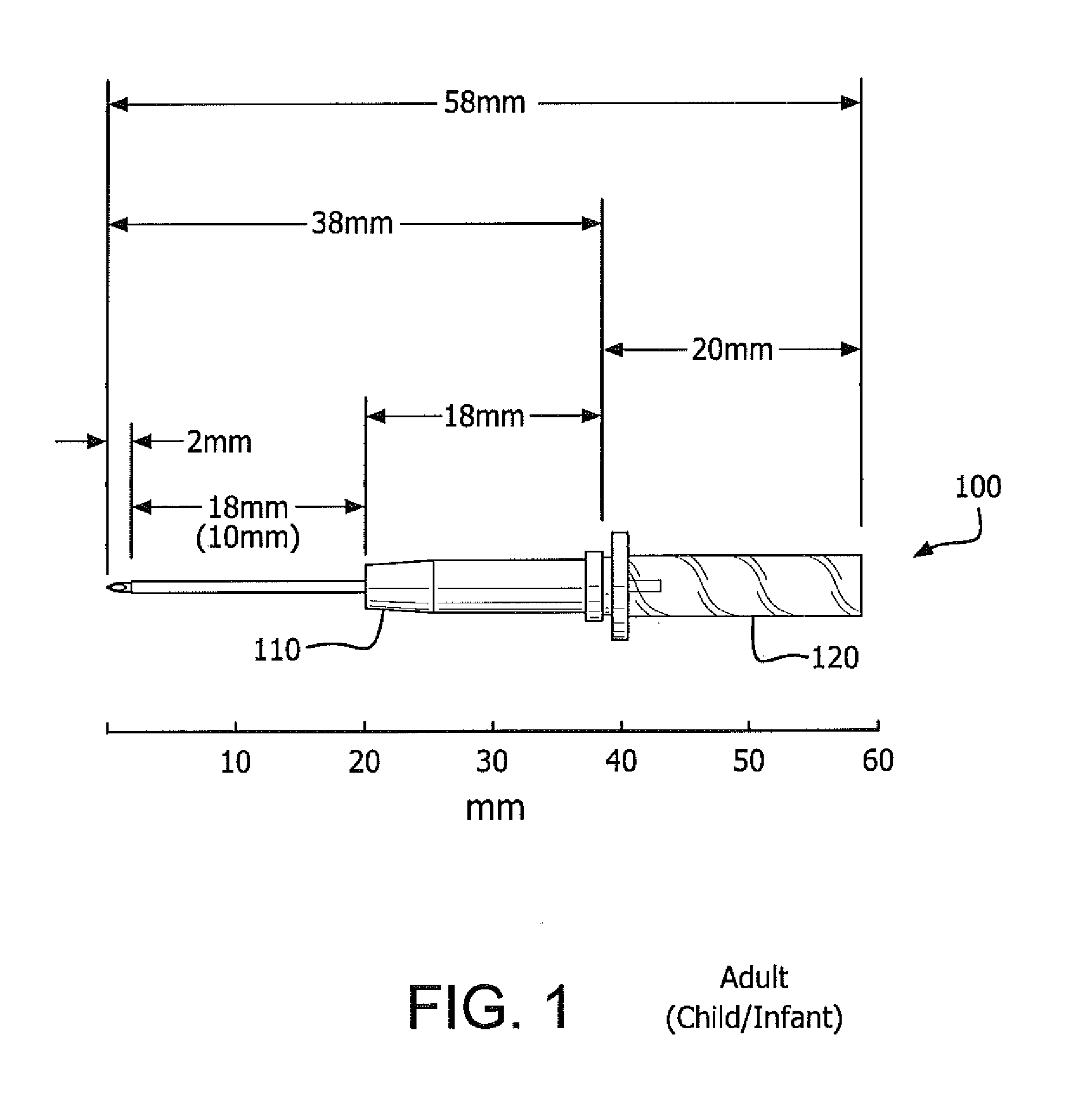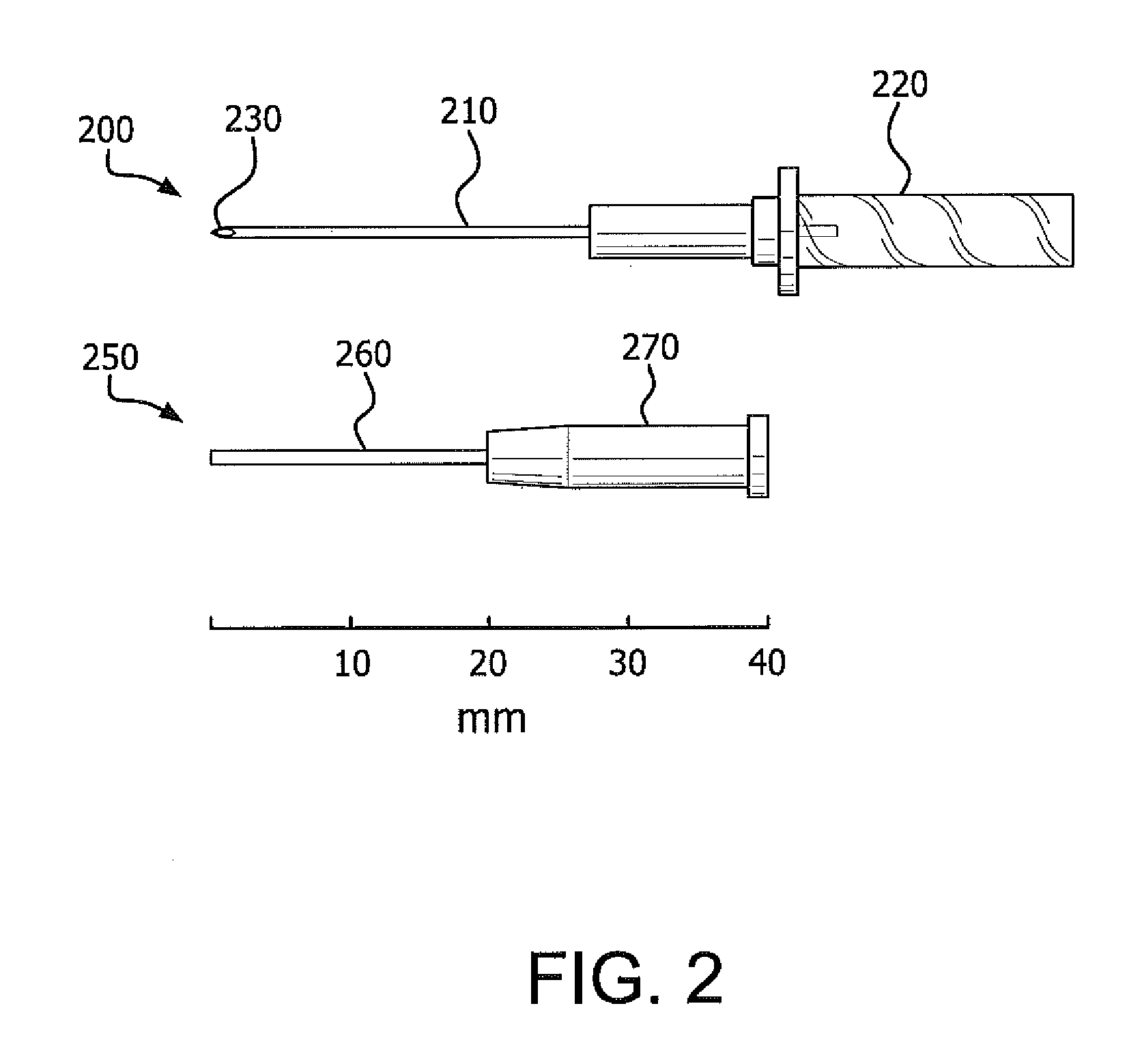Method and Apparatus for Continuous Monitoring of Exhaled Carbon Dioxide
a technology of carbon dioxide and monitoring method, which is applied in the field of continuous monitoring of exhaled carbon dioxide, can solve the problems of insufficient reliability of monitoring of end-tidal carbon dioxide, inability to sedate or awaken patients in general, and high discomfort in nasal airway, so as to achieve quick reattachment, effective and efficient monitoring port, and convenient switching
- Summary
- Abstract
- Description
- Claims
- Application Information
AI Technical Summary
Benefits of technology
Problems solved by technology
Method used
Image
Examples
experimental examples
[0099]The invention is further described in detail by reference to the following experimental examples. These examples are provided for purposes of illustration only, and are not intended to be limiting unless otherwise specified. Thus, the invention should in no way be construed as being limited to the following examples, but rather, should be construed to encompass any and all variations which become evident as a result of the teaching provided herein.
[0100]Without further description, it is believed that one of ordinary skill in the art can, using the preceding description and the following illustrative examples, make and utilize the apparatus of the present invention and practice the claimed methods. The following working examples therefore, specifically point out the preferred embodiments of the present invention, and are not to be construed as limiting in any way the remainder of the disclosure.
example 1
Experimental Measurements and Comparisons
[0101]The following experiments were designed and performed as described. Briefly, the CO2 port of the apparatus of the present invention was inserted into either side of the nasal prongs, and the stylet was withdrawn. The proximal end of the gas sampling line of about 297 cm was attached to the CO2 port. The distal end of the sampling line from the Adult Circle Breathing Circuit, Vital signs Inc. was attached to Luer adapters of the infrared capnometer, Datex-Ohmeda Modulus 2 with a push-twist motion, then the end tidal CO2 value and a waveform on monitor in exhaled air was verified. Calibration of the capnometer was performed according to the manufacturer's recommendations using a known sample gas containing 5% carbon dioxide, 40% nitrous oxide and 55% oxygen.
[0102]This demonstrated that the range of ET CO2 was about 35-38 mm Hg without supplemental oxygen and 28-32 mm Hg with oxygen insufflated at a flow rate of 3 liters per minute in an a...
PUM
 Login to View More
Login to View More Abstract
Description
Claims
Application Information
 Login to View More
Login to View More - R&D
- Intellectual Property
- Life Sciences
- Materials
- Tech Scout
- Unparalleled Data Quality
- Higher Quality Content
- 60% Fewer Hallucinations
Browse by: Latest US Patents, China's latest patents, Technical Efficacy Thesaurus, Application Domain, Technology Topic, Popular Technical Reports.
© 2025 PatSnap. All rights reserved.Legal|Privacy policy|Modern Slavery Act Transparency Statement|Sitemap|About US| Contact US: help@patsnap.com



